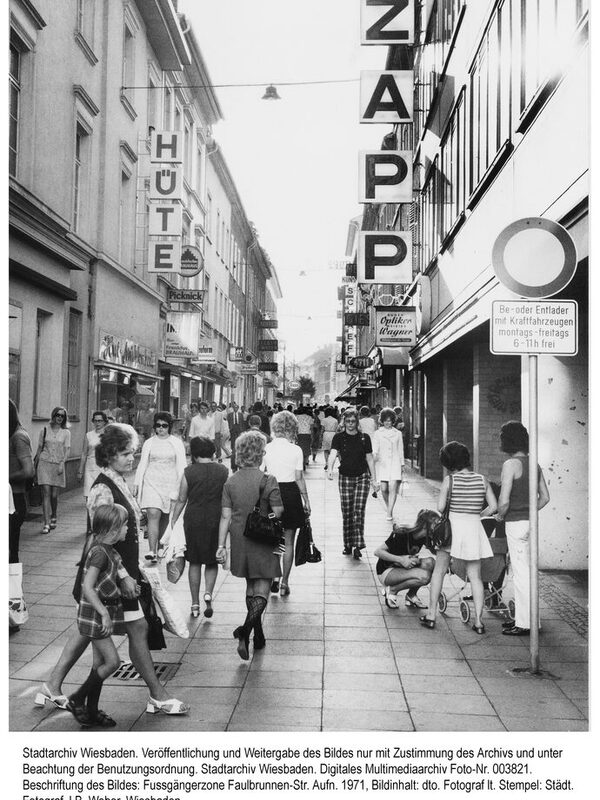Pedestrian zone
In Wiesbaden, the first pedestrian zone was created on December 4, 1969 with Faulbrunnenstraße, followed by Ellenbogengasse, Mauritiusplatz and Kleine Kirchgasse at the end of 1971.
It was only with the completion of the Michelsberg traffic junction and the Hochbrücke bridge that the inner city was relieved of traffic congestion and the opportunity arose to create a larger pedestrian zone in the old town. On September 14, 1974, after a five-year reconstruction phase, the pedestrian zone in Kirchgasse between Mauritiusplatz and Marktstraße was opened to the public.
In 1976, plans were made to extend the pedestrian zone to Kirchgasse between Luisenstrasse and Rheinstrasse, and the bus routes were moved from Kirchgasse to Schwalbacher Strasse. The newly created pedestrian zone was planted with a row of plane trees and designed with hexagonal slabs.
In 1987, the so-called Quellenmeile between Bärenstraße and Webergasse was inaugurated as a pedestrian zone. Between 2004 and 2011, the pedestrian Rheinstrasse, and the bus routes were moved from Kirchgasse to Schwalbacher Strasse. The newly created pedestrian zone was planted with a row of plane trees and designed with hexagonal slabs.
In 1987, the so-called Quellenmeile between Bärenstraße and Webergasse was inaugurated as a pedestrian zone. Between 2004 and 2011, the pedestrian zone was extensively renovated; four fountains illustrate Wiesbaden's connection to water.
Literature
Redesign of the pedestrian zone. Wiesbaden City Council, City Planning Office (ed.), Wiesbaden 2004.
Wiesbaden Report. Services provided by the city for its citizens 1968-71. Magistrat der Landeshauptstadt Wiesbaden, Stadtplanungsamt (ed.), Wiesbaden 1972.
Collection of newspaper clippings from the Wiesbaden city archives, "Pedestrian zone".
